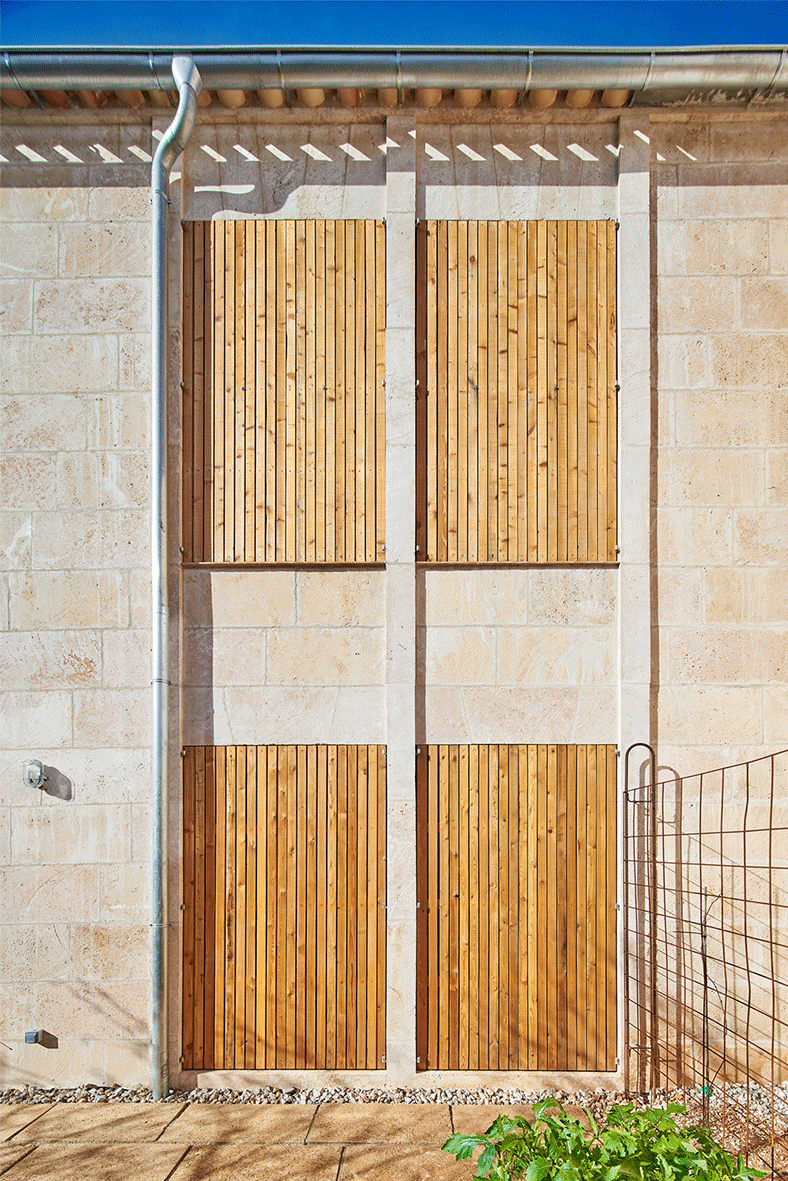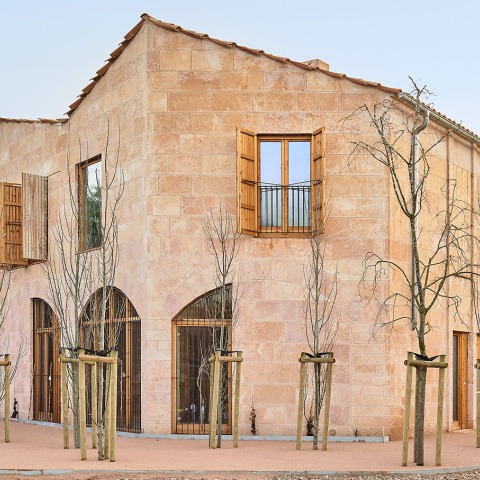The project proposed by Carles Oliver, Joaquín Moyá, Antonio Martín, Alfonso Reina and Miguel A. Rodríguez, surprises in all its constructive aspects, for proposing a quality building, respectful of the environment and also for its urban quality by proposing a model housing compact, which also uses materials from the area.
It stands out for its special interest in both, the space created with local sandstone as a structural element and not only as an enclosure, making double vaults and arches, which facilitate a versatile space, as well as the use of "old" solutions for insulation with the use Posidonia algae from Majorcan beaches.

8 Protected Public Dwellings on a Rental Basis by Carles Oliver, Joaquín Moyá, Antonio Martín, Alfonso Reina. Photograph by José Hevia

8 Protected Public Dwellings on a Rental Basis by Carles Oliver, Joaquín Moyá, Antonio Martín, Alfonso Reina. Photograph by José Hevia
Project description by Carles Oliver, Joaquín Moyá, Antonio Martín, Alfonso Reina
8 protected public dwellings on a rental basis, promoted by the Balearic Housing Institute (IBAVI) where program, structure, construction and climate comfort are solved with a unique holistic approach that comes from the qualities of the natural materials used, which are more fragile than regular ones. The building is energy class A and the expected annual demand for heating and cooling energy is 7.49 kWh/m², with the aim of minimizing energy poverty in public housing.
The project demonstrates the value and viability of incorporating stone barrel vaults in housing projects as the main strategy to provide thermal inertia to cool for free in summer through a low carbon structure as heavy as possible. This mechanism is complemented by cross ventilation by taking advantage of the sea breeze (embat).
Once the weight condition has been established, as well as the use of local materials with low environmental impact and low CO₂ footprint, the marès sandstone is selected, in this case from the same municipality of Palma, 18km away, as it is one of the local materials industrialized available with less incorporated energy, and that configures a large part of the island’s-built landscape, present in both vernacular and institutional architecture. More than 1,600 inactive sandstone quarries have been documented, but today only a dozen remain active and they are in danger of extinction if proper measures are not taken by the administrations and consumption habits in local construction change. For the moment, the recent introduction of new regulatory frameworks, more restrictive and derived from the European Directives, has increased the cost of the works and has made possible the recovery of solutions considered obsolete like this economically viable, despite having paradigmatic examples such as Can lis house by Jorn Utzon in Portopetro.

8 Protected Public Dwellings on a Rental Basis by Carles Oliver, Joaquín Moyá, Antonio Martín, Alfonso Reina. Photograph by José Hevia
The 295cm wide barrel vaults are supported on sandstone pilasters 40 × 75 cm wide, 160cm apart on axes, which transfer the horizontal thrusts towards the foundation, as happens in Romanesque and Gothic architecture. These spaces between pilasters on the façade allow for the accommodation of kitchens, pantries, cabinets, ‘flirters(1)’ and entrances.
In the type houses, the bathrooms are placed in the centre of the house organizing the routes around it.
The division between the bedrooms is made of wood so that in the future it can be disassembled to facilitate new distributions and be flexible in time and according to the needs of the inhabitants.
On the first floor, the section of the stone pilasters is reduced to 20x80cm to support a light structure of wooden trusses with steel tensors and reused solid wood formwork boards, and the insulation is made of 30 cm of dead dry leaves of Posidonia from Cala Estància, at 11km from the site. The pitched roof is solved with traditional Arabic ceramic tiles fired with renewable energies, which is expressed as it is in the perimeter of the roof.
Posidonia oceanica (Neptune grass) is a protected marine plant exclusive to the Mediterranean Sea, and its use requires a permit by the local Ministry of the Environment. Exporting posidonia outside the Balearic Islands is prohibited and fined. In addition to being an important sink for CO₂, it retains marine sediments favouring the transparency of the waters, generates white sand from calcareous organisms that inhabit its leaves, and protects the dune ecosystem from autumn and winter storms.
However, the large surplus volume of dead leaves piled up in some coastal areas and urban beaches of the Balearic Islands allows traditional uses and using the dead leaves of posidonia dried under the sun as a construction material makes visible the environmental value of this plant, and relates our inhabitation with the ecosystems that surround us. This is, we don't inhabit a house, but an ecosystem.
To activate inertia and regulate the high humidity of the Balearic Islands, above 70% on average, the hygrothermal materials that make up the structure are left exposed.
The work has been executed by a single group of 4 construction workers, who have carried out from the foundations to the roofs, with the exception of the electrical and water systems, carpentry and locksmith, exercising the true job of masonry, since the building is theirs. They have done it with their hands.

8 Protected Public Dwellings on a Rental Basis by Carles Oliver, Joaquín Moyá, Antonio Martín, Alfonso Reina. Photograph by José Hevia
(1)Space located inside a window to sit and talk. Until the middle of the s. XX in Mallorca, the flirter was the space in which the courtship took place under the watchful eye of mothers and grandmothers.

























































